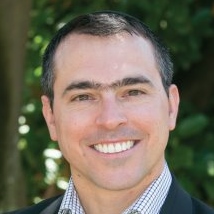
News

Why do we eat cheesecake on Shavuot?
RABBI SHMULI KAGAN
This marvellous minhag (custom) goes back 600 years to Germany and France, and fortunately spread to other communities in spite of not being practiced universally.
Many reasons are suggested for this. Some are reminiscent of halachic or legal conditions, while others more symbolic, reminding us of historical events or alluding to the nature of Torah. Let’s look at a few while focusing on one particularly meaningful idea I came across this year.
The Mishna Berura, the comprehensive commentary written by the Chafetz Chaim (Rabbi Yisrael Meir HaKohein Kagan) explains that since the Jews received the Torah on a Shabbat, practicing their newly learned laws of preparing kosher meat would be impossible. Eating a milchik meal was the only option.
Nevertheless, one should still partake of meat to add simcha to the day. One therefore needs two separate loaves to be eaten at the separate meals, commemorating the Shavuot offering brought to the Beit Hamikdash called the shtei halechem, which was made up of two leavened loaves of bread. Such exactness in separating milk and meat demonstrates the love we have for Torah law.
Gematria refers to the numerical value Hebrew letters possess, and is a tool used to extract deeper meanings and connotations for a word. Chalav (milk) has the gematria of 40, which is how many days our teacher Moshe spent on Mount Sinai writing down the Torah. Forty is also the amount of generations after Moshe that the written Torah was compiled, to Rav Ash and Ravina, who codified the Talmud which is the prime example of the oral Torah. Talmud begins and ends with the letter mem, which has the numerical value of 40.
The Torah is compared to milk, as the verse says, “Like honey and milk [the Torah] lies under your tongue.” (Song of Songs 4:11) Just as milk sustains us, Torah nourishes the soul. Just as honey adds sweetness and can heal, Torah provides meaning and guidance.
Rav Avraham Yitzchak Hakohein Kook, the first Ashkenazi chief rabbi of what was then Palestine, suggests another similarity between Torah and milk and honey. According to our sages, nursing involves the transformation of blood into milk (Bechorot 6b). The embryo is fed by blood, while the baby is sustained by milk. Milk strangely comes from an animal, which is also the source of meat. Honey, too, is produced by an animal which isn’t kosher. These are foods which are examples of transformation. Such foods are appropriate to be eaten on a festival where we celebrate the gift Hashem endowed us to transform the world. We can purify the impure; we can sanctify the mundane; we can perfect the imperfect.
The Gemara (Shabbat 88b) describes how Moshe argued with the angels who didn’t want the holy Torah to be handed to lowly people. Moshe defended Hashem’s choice, explaining that the Torah could be used by humanity specifically because we live in a world that needs transformation. Humans are dynamic and creative; angels are perfect and static.
The COVID-19 virus has forced us to think differently. For example, we have had to utilise technology to educate as never before. From Zoom concerts and shiurim with virtual break-out rooms for chavruta (partner) learning, to hummus making demonstrations and online bingo evenings. Being the Rav of Bnei Akiva, I see first-hand the passionate desire and imaginative minds of our madrichim in their quest to transform the lives of our channichim, utilising a secular medium to enlighten and educate. They embody our role “to transform the world with the kingship of Hashem [the Aleinu prayer].”
This year, may we enjoy the soft and crispy contrast of our favourite cheesecake, contemplating the different layers of taste and meaning within it, and may it nourish our desire to make this world that much more delicious.
Chag Sameach!
- Rabbi Shmuli Kagan is the rabbi of Bnei Akiva South Africa, the mashgiach rugani (spiritual guidance counsellor) of the Mizrachi University Kollel, and teaches kodesh at Yeshiva College High School.




